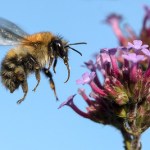 For only the first time in the history of this blog, I have been on holidays and busy and missed two months in a row. Let me remedy that now.
For only the first time in the history of this blog, I have been on holidays and busy and missed two months in a row. Let me remedy that now.
What would the start of the new financial year be, without a little tax story about trading stock. I discovered this when I was searching for something else on the ATO website.
An increase in your trading stock’s value over the year is counted as assessable income, while a decrease is considered an allowable deduction. So far, that sounds simple enough but section 70-10 ITAA 1997 states that trading stock includes:
(a) anything produced, manufactured or acquired that is held for purposes of manufacture, sale or exchange in the ordinary course of a business; and
(b) live stock.
The term ‘live stock’ is defined in subsection 995-1(1) ITAA 1997 to ‘not include animals used as beasts of burden or working beasts in a business other than a primary production business’.
There is actually a High Court case, Federal Commissioner of Taxation v. Wade (1951) 84 CLR 105 at page 110 which found that all animals used in a primary production business are included as live stock.
There is a convoluted definition of “primary production business” (also in 995-1(1)) which includes businesses of:
- cultivating or propagating plants, fungi or their products or parts (including seeds, spores, bulbs and similar things), in any physical environment; or
- maintaining animals for the purpose of selling them or their bodily produce (including natural increase); or
- manufacturing dairy produce from raw material that you produced; or
- conducting operations relating directly to taking or catching fish, turtles, dugong, b̻che Рde Рmer, crustaceans or aquatic molluscs; or
- conducting operations relating directly to taking or culturing pearls or pearl shell; or
- planting or tending trees in a plantation or forest that are intended to be felled; or
- felling trees in a plantation or forest; or
- transporting trees, or parts of trees, that you felled in a plantation or forest to the place:
- where they are first to be milled or processed; or
- from which they are to be transported to the place where they are first to be milled or processed.
Now, consider the following logic:
- Bees, being insects, are animals;
- Honey is a result of their bodily produce; and
- Therefore bees kept for use in a honey production business are both live stock and trading stock as defined in section 70-10.
Needless to say, bees are difficult to count. Never fear, ATO PS LA 2008/4 (GA) to the rescue. The ATO accepts that: “Bees are difficult to account for as trading stock, therefore, the ATO accepts the following principles…”. This includes that one live hive of bees equals one unit of measurement for valuing bees. Of course the reference to a hive is a reference to the bees that make up the hive and not the hive structure box and frame. The hive structure box and frames are depreciating assets (of course they are).
It goes on and I won’t bore you with it. There are similar rulings and guidelines for oysters and other difficult to count things!.
Creative commons acknowledgment for the photograph.
